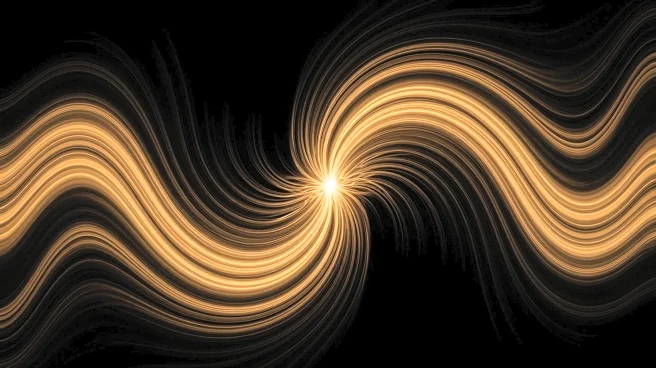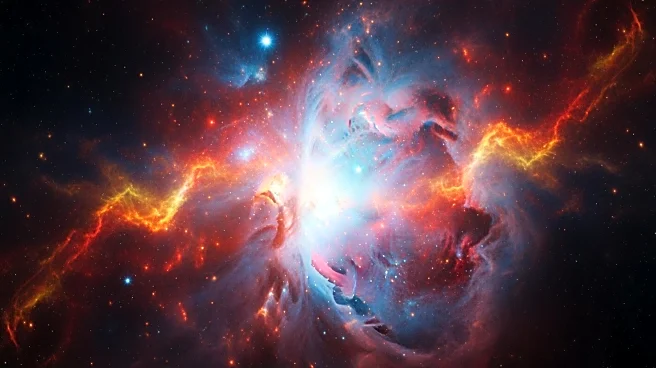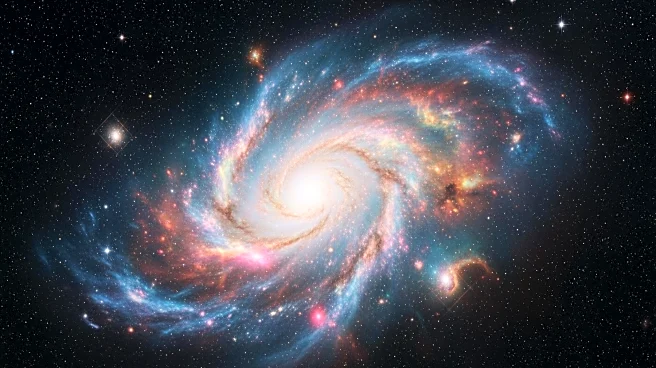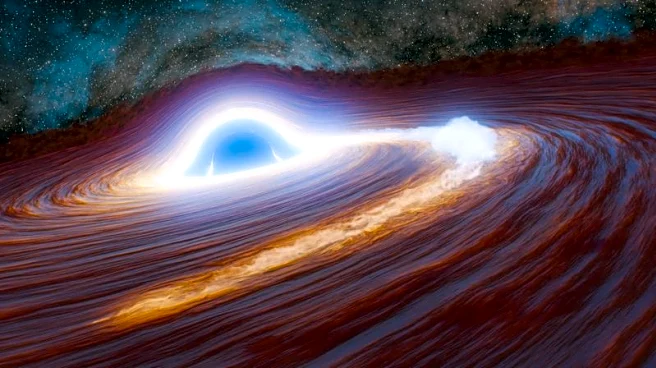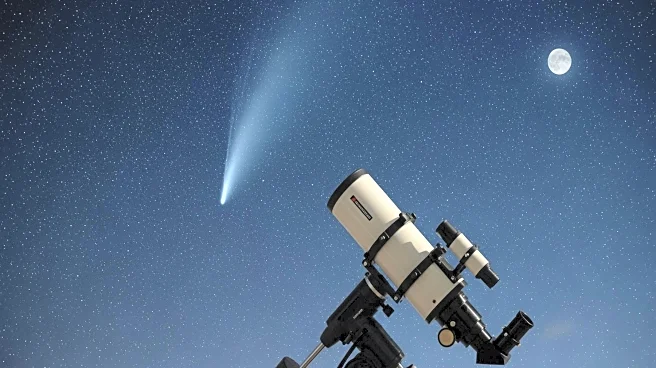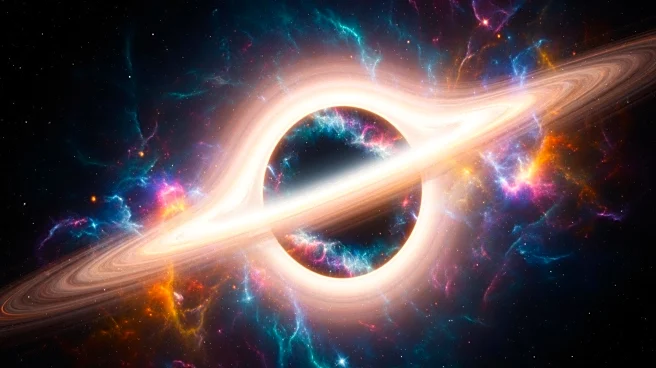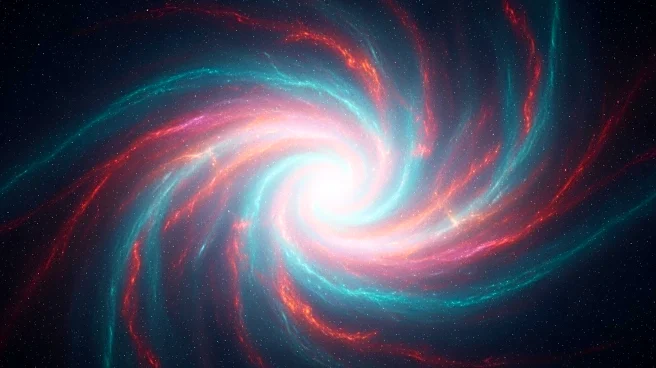What's Happening?
In a groundbreaking experiment, scientists have successfully recreated 'cosmic fireballs' using the Super Proton Synchrotron at CERN's HiRadMat facility. This experiment aimed to study the stability of high-temperature plasma jets emitted by blazars,
which are supermassive black hole-powered galactic engines. By generating electron-positron pairs and blasting them through plasma, researchers simulated conditions found in these cosmic jets. The study seeks to understand the origin of magnetic fields in intergalactic space and the mystery of missing low-energy gamma-rays, which are expected to be detected by space-based gamma-ray telescopes but have so far eluded observation.
Why It's Important?
The experiment holds significant implications for astrophysics, particularly in understanding the dynamics of cosmic jets and the role of magnetic fields in the universe. The findings suggest that plasma beam instabilities are too weak to account for the missing gamma-rays, supporting the theory of a relic magnetic field in the intergalactic medium. This could lead to new insights into the early universe and potentially require physics beyond the Standard Model. The research contributes to the broader understanding of cosmic phenomena and may influence future studies in plasma astrophysics and high-energy physics.
What's Next?
The results of the experiment raise further questions about the existence and origin of relic magnetic fields in the universe. Future research may involve exploring physics beyond the Standard Model to explain these phenomena. The team suggests that facilities like the Cherenkov Telescope Array Observatory could be instrumental in probing these fundamental cosmic questions. Continued collaboration between astrophysics and high-energy physics communities is expected to advance the understanding of cosmic jets and intergalactic magnetic fields.
Beyond the Headlines
The experiment highlights the potential of laboratory astrophysics to test theories about the high-energy universe. By recreating relativistic plasma conditions on Earth, scientists can measure processes that shape cosmic evolution. This approach may lead to novel insights into the formation of magnetic fields and the behavior of matter-antimatter pairs in space, offering a new dimension to frontier research at facilities like CERN.


